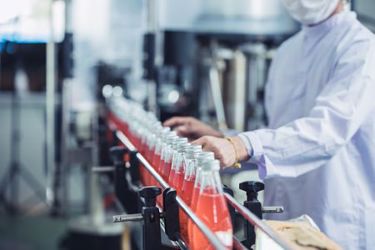Comparative Analysis Of GHG Emissions In F&B Wastewater Treatment

Most industrial food and beverage (F&B) wastewater is a result of clean-in-place (CIP) processes that are required for ensuring product quality and FDA compliance. Each CIP process may include up to 5 rinse cycles per product line. The first rinse cycle results in 80-90% of the chemical oxygen demand (COD) concentration associated with industrial discharge. Subsequent CIP rinse cycles discharge mostly clean water and represent majority of discharge volume. Therefore, 20% of the total discharge volume represents 80% of the overall COD concentration, and a majority of wastewater management costs. Large commercial beverage manufacturers may discharge up to 300,000 gallons per day (gpd) per facility with COD values ranging between 3,000 mg/L and 6,000 mg/L. This results in total discharge loads of 3,400 to 6,800 kg-COD/d that may be discharged to sewer or hauled offsite for landfill or alternative treatment.
In this white paper, explore how sludge production and energy consumption result in significantly high GHG emissions for aerobic treatment processes.
Get unlimited access to:
Enter your credentials below to log in. Not yet a member of Food Online? Subscribe today.
